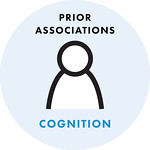Figure It Out

Getting from Information to Understanding
Information is easy. Understanding is hard.
From incomprehensible tax policies to confusing medical explanations, we’re swamped with information that we can’t make sense of. Figure It Out shows us how to transform information into better presentations, better meetings, better software, and better decisions. So take heart: under the guidance of Anderson and Fast, we can, in fact, figure it out—for ourselves and for others.
Who this book is for
- Mid-career professionals who are ready to think more critically about how they work with information.
- Product Managers, Software Engineers, Project Managers, Content Strategists, Product Strategists.
Information is easy. Understanding is hard.
From incomprehensible tax policies to confusing medical explanations, we’re swamped with information that we can’t make sense of. Figure It Out shows us how to transform information into better presentations, better meetings, better software, and better decisions. So take heart: under the guidance of Anderson and Fast, we can, in fact, figure it out—for ourselves and for others.
Who this book is for
- Mid-career professionals who are ready to think more critically about how they work with information.
- Product Managers, Software Engineers, Project Managers, Content Strategists, Product Strategists.
Testimonials
In this illuminating and profoundly unique book, Stephen and Karl have cracked the code on how to make complex concepts not only simple but tangible. And, as they show, that makes all the difference. When you need to give your ideas body, form, and shape, you need this book.
Dan Roam, Author of The Back of the Napkin and Draw to Win
Figure It Out is about learning tools + spaces—perception, representation, metaphor, models, systems, interaction-in-the-world, thinking-with-things—and design. Required reading for designers and anyone else who needs to explain things.
Hugh Dubberly, Principal, Dubberly Design Office
Figure It Out won’t just change the way you think, but it will change the way you think about the way you think. Figure It Out is an intellectual tour de force, a cogent and compelling synthesis spanning art, science, design, and philosophy to create an elegant picture of how the world shapes our minds and vice versa, and how the meaning we make from our world is what makes us irrepressibly, irreducibly human.
Jesse James Garrett, author of The Elements of User Experience
We all think. But we rarely think about how we think.
Stephen and Karl dissect how we naturally make sense of the world, using not only our minds, but also our bodies and our surroundings. They break down the process into its different constituent parts and lay out the mental operations, physical behaviors, strategies, and activities we all use on a day-to-day basis.By revealing and describing these processes in a structured way, they provide the reader with a rich and actionable toolkit for sharpening their thinking and extending their capabilities for understanding and reasoning.
Eva-Lotta Lamm, designer and visual thinker
The challenge of making sense of the oceans of information brought to us by digital technology is the truly significant task of our era. Not since Pinker’s 1997 tome has anyone addressed this important arena with the breadth and clarity it deserves. We will never create machines that understand their world until we can wrap our heads around the more daunting question of how humans understand it. This book brings us a step closer to that day.
Alan Cooper, author of About Face and The Inmates Are Running the Asylum
Designers need to help users make sense of an increasingly complex world. Karl Fast and Stephen Anderson have laid out an invaluable toolkit to design for understanding.
Julie Dirksen, author, Design for How People Learn
Table of Contents
Foreword by Christina Wodtke
Chapter 1: From Information to Understanding
Chapter 2: Understanding as a Function of the Brain, Body, and Environment
Chapter 3: Understanding Is Fundamentally About Associations Between Concepts
Chapter 4: Everyday Associations: Metaphors, Priming, Anchoring, and Narrative
Chapter 5: Everyday Associations: Aesthetics and Explicit Visual Metaphors
Chapter 6: Closing Thoughts and Cautionary Notes About Associations
Chapter 7: Why Our Sense of Vision Trumps All Others
Chapter 8: An Intelligent Understanding of Color
Chapter 9: Ways We Use Space to Hold and Convey Meaning
Chapter 10: Interacting with Information
Chapter 11: A Pattern Language for Talking About Interactions
Chapter 12: Seeing the System of Cognitive Resources
Chapter 13: Coordinating a System of Resources
Chapter 14: A Critical Look at Tools and Technologies for Understanding
Chapter 15: A Perspective on Future Tools and Technologies for Understanding














